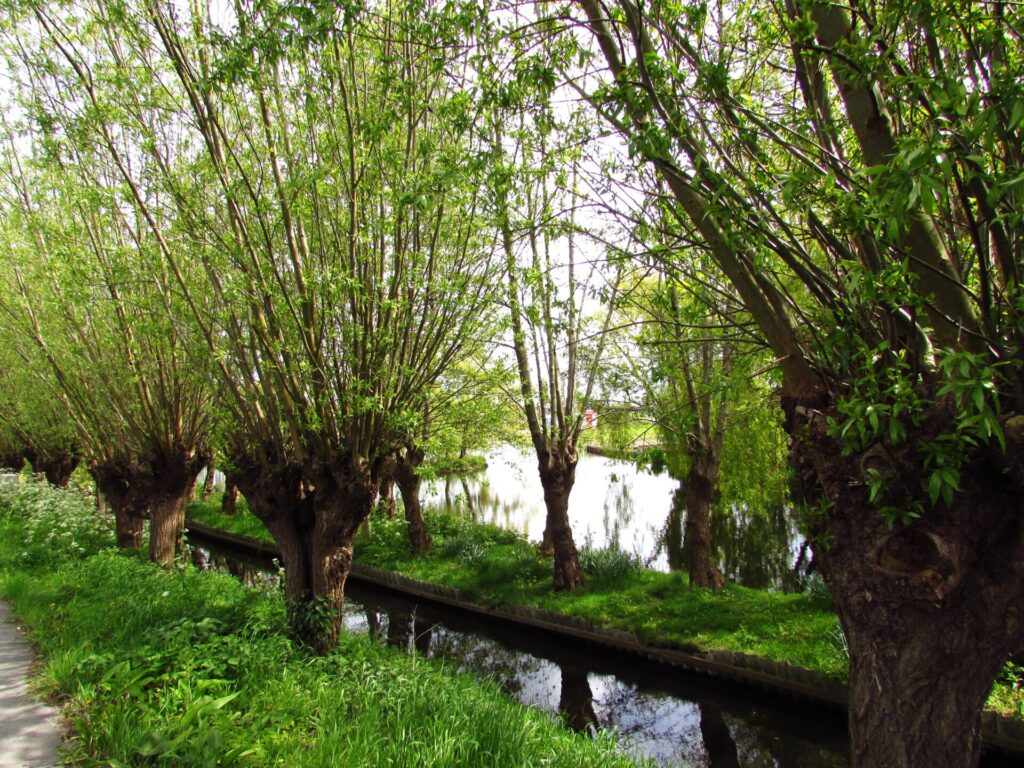The Salicaceae or Willow family is now a much larger family.
It just used to include the willows, poplar, aspen, and cottonwoods.

Genetic studies summarized by the Angiosperm Phylogeny Group (APG) have greatly expanded the circumscription of the family to contain 56 genera and about 1220 species, including the Scyphostegiaceae and many of the former Flacourtiaceae.
BUT; fortunately for us, in the British Isles it has only two main genera, namely the Poplar and the Willow. Although the flowers (as always in traditional classification) determine the ultimate genus and whether it is a Willow or Poplar, most of us can easily tell the difference from the leaves. All the Poplars have a triangular, broad oval, to heart-shape outline with often a long leaf stem (petiole) whilst most of the Willows have long, narrow leaves or roundish, much smaller leaves than Poplars.
When there are no leaves in winter the tree could be identified by the winter buds, where Willows just have one outer scale and the Poplar has several. However as there is much to say about the Willow, I will leave the Poplar for another blog in the future!
Pictures by Matt Summers and Mike Poulton unless stated. The links provided on the scientific and common plant names provide more detailed information as well as good pictures on each species. Also special thanks to PFAF which provides a wonderful plant database of not just native plants but any useful plants all over the world.
There are links on the Scientific name from the Plant Atlas Online and I also copied the general ecological information from them. Wikipedia or other websites provide more information about the uses, etc.
Contents
Classification of the Willows
Section 1: SALIX
- Salix pentandra or Bay Willow
- S. x meyeriana (Salix fragilis x pentandra) or Shiny-leaved Willow
- S. euxina or Crack Willow + nbn atlas
- S. x fragilis or Hybrid Crack Willow
- S. alba or White Willow (archaeophyte)
- S. triandra or Almond Willow (arch.)
- S. x mollissima (Salix triandra x viminalis) or Sharp-stipuled Willow (arch.)
Section 2: VETRIX
- S. purpurea or Purple Willow
- S. viminalis or Osier (arch.)
- S. x smithiana (Salix cinerea x viminalis) or Broad-leaved Osier
- S. x calodendron (Salix caprea x cinerea x viminalis ) or Holme Willow
- S. x stipularis (Salix aurita x caprea x viminalis) or Eared Osier
- S. x holosericea (Salix viminalis x cinerea) or Silky-leaved Osier
- S. x fruticosa (Salix aurita x viminalis) or Shrubby Osier
Section 3: CHAMAETIA
- S. myrsinites or Whortle Leaved Willow
- S. herbacea or Dwarf Willow
- S. reticulata or Net Leaved Willow
